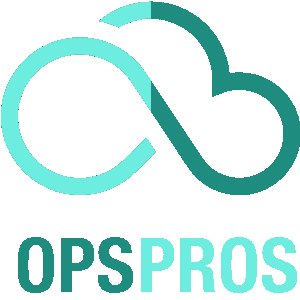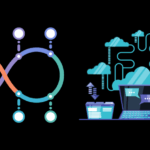
DevOps Pipelines streamline code deployment, automating the journey from development to production. Achieve faster releases and higher quality now.
DevOps pipelines allow for seamless integration and continuous delivery of high-quality software. In this article, we’ll discuss key strategies for building strong DevOps pipelines, including CI/CD pipelines, DevOps automation, pipeline optimization, and more.
Key Takeaways
- DevOps pipelines are essential for successful software development and delivery.
- CI/CD pipelines, DevOps automation, and pipeline optimization are key strategies for building strong pipelines.
- Choosing the right tools and frameworks, building security measures into the pipeline, and monitoring and analytics are also crucial components of a successful DevOps pipeline.
What is a DevOps Pipeline?
A DevOps pipeline is a set of processes and tools used to build, test, and deploy software applications. It is an automated workflow that enables developers to continuously integrate and deliver code changes to production. A DevOps pipeline typically includes steps such as code building, testing, packaging, and deployment.
Using a DevOps pipeline provides several benefits for software development. It eliminates manual errors and reduces the time required to build and release applications. With a pipeline, developers can focus on writing code instead of managing infrastructure, leading to higher productivity and faster time-to-market.
CI/CD Pipelines: Streamlining the Development Process
CI/CD pipelines are a proven approach to automating software delivery processes and enabling faster release cycles while maintaining quality standards. The pipelines facilitate the automated integration and testing of code changes, as well as the streamlined deployment of the application or software product into production.
CI/CD pipelines are made up of various stages, including continuous integration, testing, and continuous delivery. In the continuous integration stage, code changes are automatically integrated into the source code repository. The testing stage ensures that the code changes meet the required quality standards, and the continuous delivery stage deploys the changes to the production environment automatically.
The benefits of CI/CD pipelines for software development teams are numerous. Firstly, pipelines enable teams to identify and correct issues earlier in the software development process, reducing the time and resources required to fix later-stage issues. Secondly, the automation of the software delivery process reduces the likelihood of errors and maximizes the efficiency of the software development team. Finally, the streamlined deployment process provided by the CI/CD pipeline allows for faster release cycles and ultimately a better user experience.
DevOps Automation: Building Efficiency into the Pipeline

Automation is a key component of DevOps pipelines. By automating repetitive tasks, such as building, testing, and deployment, teams can significantly improve efficiency and lower the risk of human error.
One of the main advantages of DevOps automation is that it frees up time for developers to focus on more critical tasks. For example, instead of manually testing each code change, developers can rely on automated testing tools to quickly and accurately identify issues.
Automation can also help standardize processes and reduce variability. By adopting a consistent approach to tasks across the pipeline, teams can ensure that code is built and deployed the same way every time. This approach can increase reliability and reduce the risk of errors that can arise from inconsistent processes.
Another benefit of DevOps automation is that it enables teams to detect issues earlier in the development process. For example, if an automated test fails, the team can identify the problem and fix it before the code is deployed to production.
Overall, DevOps automation is an essential component of building efficient, reliable pipelines. By automating tasks such as testing, building, and deployment, teams can reduce the workload on developers and increase the speed and quality of software delivery.
Pipeline Optimization: Enhancing Performance and Scalability
Optimizing DevOps pipelines is crucial for achieving optimal performance and scalability. Here are some strategies to enhance your pipeline:
Parallelizing Tasks
One effective method for optimizing pipeline performance is to parallelize tasks. By breaking down tasks into smaller ones and executing them simultaneously, you can reduce the time it takes to complete the pipeline. This can be done by using parallelism frameworks such as Apache Spark or by utilizing containerization technologies like Docker or Kubernetes.
Optimizing Resource Utilization
Another way to improve pipeline efficiency is by optimizing resource utilization. This can be done by carefully selecting the hardware and software resources needed for the pipeline and ensuring that they are used efficiently. Cloud-based solutions such as AWS, Microsoft Azure, and Google Cloud provide a range of tools for optimizing resource utilization, including auto-scaling, load balancing, and utilization monitoring.
Implementing Caching Mechanisms
Implementing caching mechanisms is another effective approach for optimizing pipeline performance. By caching frequently requested data and results, you can reduce the time it takes to retrieve them and speed up the pipeline. Caching frameworks such as Redis or Memcached can be used to implement caching mechanisms.
By employing these strategies, you can optimize your DevOps pipelines to ensure optimal performance and scalability, ultimately leading to a more efficient and effective software development process.
Collaboration and Communication in DevOps Pipelines

Successful DevOps pipelines require collaboration and communication among team members. The development and deployment process involves multiple teams working together, including developers, operations, and security personnel. Effective communication and collaboration can improve the speed and reliability of the pipeline.
One way to promote collaboration is to form cross-functional teams that bring together individuals with diverse skill sets. This can enhance problem-solving abilities and promote innovation. Frequent feedback loops are also essential to good communication. Team members should provide regular updates on progress and be receptive to feedback from others.
Effective communication tools can also enhance collaboration. Chat applications such as Slack or Microsoft Teams can facilitate quick and efficient communication among team members. Video conferencing tools like Zoom can also be useful for remote teams.
Documentation is another important aspect of collaboration. Documentation should be kept up-to-date and easily accessible to all team members. This can include information about the pipeline’s architecture, deployment processes, and troubleshooting guides.
Finally, it is important to foster a culture of collaboration and openness. Team members should feel empowered to share their ideas and concerns, and leadership should encourage this behavior.
Choosing the Right Tools and Frameworks
Choosing the right tools and frameworks is essential for building successful DevOps pipelines. The tools and frameworks you choose will impact the speed, reliability, and flexibility of your pipeline. When selecting tools, it is important to consider:
- Compatibility with your current tools and infrastructure
- Scalability and adaptability
- Community support and popularity
- Cost and licensing
Popular DevOps pipeline tools include Jenkins, Travis CI, and CircleCI. There are also cloud-based services available, including Amazon Web Services (AWS) CodePipeline and Microsoft Azure DevOps.
Frameworks
Frameworks provide a standardized way to develop and deploy code across an organization. They offer pre-built tools and libraries that can be used to streamline the development process and ensure consistency in code quality. Popular DevOps frameworks include:
| Framework | Description |
|---|---|
| Ansible | Open-source automation tool used for configuration management and application deployment. |
| Docker | Containerization platform used for building, shipping, and running distributed applications. |
| Kubernetes | Open-source container orchestration system used for automating deployment, scaling, and management of containerized applications. |
Choosing the right tools and frameworks is crucial for building a successful DevOps pipeline. Consider your requirements carefully and evaluate different options to choose the best tools for your organization.
Building Security into the Pipeline

When it comes to DevOps pipelines, security should be a top priority. Incorporating security measures helps protect sensitive data and prevents security breaches. Below are some key practices to consider:
- Code scanning: Implementing automated code scanning tools can help identify security vulnerabilities early in the development process. This allows for quicker and easier remediation of issues.
- Vulnerability assessments: Conducting regular vulnerability assessments throughout the pipeline can help identify potential security threats and allow for proactive mitigation.
- Secure deployment configurations: Ensuring that deployment configurations are secure and properly configured can prevent unauthorized access or changes to the pipeline.
By incorporating security practices into the DevOps pipeline, teams can build secure and reliable software that meets compliance standards.
Managing Pipeline Changes and Versioning
In DevOps pipelines, managing changes is critical to ensure that all team members are working with the most up-to-date and accurate code. This is where version control comes in. Version control allows teams to track changes made to code, roll back to previous versions, and collaborate effectively.
One commonly used version control system is Git. Git allows teams to create branches for new features or bug fixes, which can be merged back into the main codebase once they are ready. It is important to establish clear guidelines for creating and merging branches to avoid conflicts and ensure that changes are thoroughly reviewed before being merged.
When managing changes in a pipeline, it is also important to maintain backward compatibility. This means that new changes should not break existing functionality. To ensure backward compatibility, it is recommended to use versioning in the pipeline itself, such as labeling pipeline versions and tracking changes made to the pipeline.
Branching Strategy
When using Git for version control, there are several branching strategies available, each with its own benefits and drawbacks. Below are some of the most commonly used branching strategies:
| Branching Strategy | Description |
|---|---|
| Trunk-Based Development | All changes are made directly to the trunk/main branch. This is ideal for smaller teams and projects with low complexity. |
| Feature Branching | Each feature or bug fix has its own branch. Changes are made in isolation and then merged back into the main branch. This allows for more collaboration and reduces the risk of conflicts. |
| Gitflow | Uses two main branches: a develop branch for ongoing development and a master branch for production releases. Feature branches are created off the develop branch and merged back in once complete. |
It is important to choose a branching strategy that aligns with the needs of your team and project. Regularly reviewing and refining the strategy can also help optimize the pipeline for efficiency and productivity.
Overcoming Challenges and Troubleshooting

As with any software development process, DevOps pipelines also face their fair share of challenges and roadblocks. However, with the right strategies and approaches, these challenges can be overcome, and the pipeline can be optimized for improved performance and reliability.
Identifying and Addressing Bottlenecks
One common challenge faced by DevOps pipelines is slow and inefficient builds or deployments, leading to long wait times. Identifying the bottlenecks in the pipeline and addressing them can significantly improve performance. For instance, if the testing phase takes a long time, optimizing test cases, reducing dependency on external resources, and parallelizing tests can speed things up.
Dealing with Configuration Drifts
Configuration drifts can occur when there are discrepancies between the development, testing, and production environments, leading to unexpected behavior or errors. To avoid this, ensure that the configuration settings are consistent across all environments, and use configuration management tools like Ansible or Puppet.
Managing Divergent Code Changes
With multiple developers working on the same codebase, divergent changes to the code can cause conflicts during integration. To avoid this, maintain a single source of truth and adhere to branching and merging strategies. Additionally, use version control tools like Git to track changes and maintain a history of code changes.
Debugging Failed Builds or Deployments
Failed builds or deployments can bring the pipeline to a halt, causing delays in the development process. To troubleshoot these issues, ensure that detailed logs and error messages are available, and use debugging tools to identify the root cause of the problem. Additionally, implement automated rollback mechanisms to quickly revert to a stable version in case of failures.
By addressing these common challenges and implementing the right strategies, DevOps pipelines can be optimized for improved performance, scalability, and reliability.
Monitoring and Analytics for Continuous Improvement
Effective monitoring and analytics are critical components of successful DevOps pipelines. They provide valuable insights into the performance of the pipeline and enable continuous improvement. With the right monitoring tools and analytics, teams can quickly identify bottlenecks, optimize resource utilization, and resolve issues before they impact the production environment.
Implementing Effective Monitoring
Monitoring tools are essential for tracking the health and performance of the DevOps pipeline. These tools should be integrated with the pipeline and should provide real-time updates on the status of each stage. Teams should leverage tools that provide a single dashboard for all pipeline components, including servers, databases, and applications.
To ensure effective monitoring, teams should focus on the following:
- Define clear metrics to measure the performance of the pipeline.
- Set up alerts to notify teams of potential issues or failures.
- Monitor performance trends over time to identify opportunities for improvement.
- Integrate security checks into the pipeline to detect vulnerabilities.
Using Analytics for Continuous Improvement
Analytics are essential for identifying patterns and trends in the performance of the pipeline. Data analysis can help teams optimize the pipeline and improve overall efficiency. Teams should focus on the following when using analytics:
- Collect relevant data to analyze, including metrics on build times, test results, and deployment success rates.
- Use data visualization tools to understand trends and patterns more easily.
- Identify root causes of problems and take corrective action.
- Use data to refine the pipeline and optimize performance continually.
Effective monitoring and analytics can significantly improve the performance and reliability of DevOps pipelines. Teams should invest in the right tools and focus on continuous improvement to ensure they are getting the most out of their pipelines.
Conclusion: Empowering Software Development with DevOps Pipelines

Building DevOps pipelines is crucial for successful software development. By implementing key strategies such as CI/CD pipelines, DevOps automation, pipeline optimization, choosing the right tools and frameworks, building security into the pipeline, monitoring and analytics, managing pipeline changes and versioning, collaboration and communication, and troubleshooting, developers can empower their development process.
It’s important to remember that DevOps pipelines are not a one-time setup but an ongoing process of continuous improvement. By constantly monitoring and analyzing the performance of the pipeline, developers can ensure that it’s delivering the expected results.
Incorporating DevOps pipelines can help software development teams increase efficiency, reduce errors, and achieve faster time-to-market. It’s time to take advantage of this technology and start building robust DevOps pipelines for your software development needs.
Join the growing number of successful DevOps teams and implement robust pipelines to take your software development to the next level. Remember, with the right strategies and mindset, DevOps pipelines can provide a powerful framework for success.
FAQs
Q: What is a DevOps pipeline?
A: A DevOps pipeline is a series of automated steps that enable developers to build, test, and deploy code efficiently and reliably.
Q: What are the components of a DevOps pipeline?
A: The components of a DevOps pipeline typically include build servers, source control systems (such as GitHub or Azure Repos), continuous integration and continuous deployment tools, automated testing frameworks, and deployment environments.
Q: How can I build a DevOps pipeline?
A: To build a DevOps pipeline, you need to start by defining your development and operations processes and identifying the tools and technologies that align with your requirements. Then, you can set up the necessary infrastructure, configure your tools, and establish the workflows that automate the build, test, and deployment processes.
Q: What is continuous integration?
A: Continuous integration is a development practice where developers frequently merge their code changes into a shared repository. This ensures that new code is tested and integrated with the rest of the project on an ongoing basis, reducing merge conflicts and enabling faster feedback loops.
Q: What is Azure Pipelines?
A: Azure Pipelines is a fully-featured continuous integration and continuous deployment (CI/CD) service offered by Microsoft Azure. It allows teams to build, test, and deploy their applications with ease, supporting various platforms and languages.
Q: How can I use Azure Pipelines in my DevOps pipeline?
A: To use Azure Pipelines in your DevOps pipeline, you can leverage the Azure Pipelines service provided by Microsoft Azure. You can configure pipelines to build and deploy your code from repositories hosted on Azure Repos or other source control systems, and orchestrate the entire build and deployment process with customizable stages and tasks.
Q: What is continuous testing in a DevOps pipeline?
A: Continuous testing in a DevOps pipeline refers to the practice of automatically running tests at every stage of the pipeline. This ensures that any issues or bugs are identified early in the development process and can be addressed before they are pushed to production.
Q: How can I create an effective DevOps pipeline?
A: To create an effective DevOps pipeline, you need to carefully plan and define your development and deployment processes, choose the right tools and technologies for your needs, automate as much as possible, and establish strong communication and collaboration between development and operations teams.
Q: What is the role of Azure in a DevOps pipeline?
A: Azure can play a significant role in a DevOps pipeline as it offers a wide range of services and tools that can be used to build and deploy code. Azure Pipelines, Azure Repos, and other Azure services can be integrated seamlessly to create a complete end-to-end DevOps practice.
Q: What are the stages of a DevOps pipeline?
A: The stages of a DevOps pipeline can vary based on the specific requirements of a project, but generally include steps such as code compilation, unit testing, static code analysis, packaging, deployment to test environments, integration testing, user acceptance testing, and ultimately, deployment to production.
Noah is an accomplished technical author specializing in Operations and DevOps, driven by a passion ignited during his tenure at eBay in 2000. With over two decades of experience, Noah shares his transformative knowledge and insights with the community.
Residing in a charming London townhouse, he finds inspiration in the vibrant energy of the city. From his cozy writing den, overlooking bustling streets, Noah immerses himself in the evolving landscape of software development, operations, and technology. Noah’s impressive professional journey includes key roles at IBM and Microsoft, enriching his understanding of software development and operations.
Driven by insatiable curiosity, Noah stays at the forefront of technological advancements, exploring emerging trends in Operations and DevOps. Through engaging publications, he empowers professionals to navigate the complexities of development operations with confidence.
With experience, passion, and a commitment to excellence, Noah is a trusted voice in the Operations and DevOps community. Dedicated to unlocking the potential of this dynamic field, he inspires others to embrace its transformative power.







